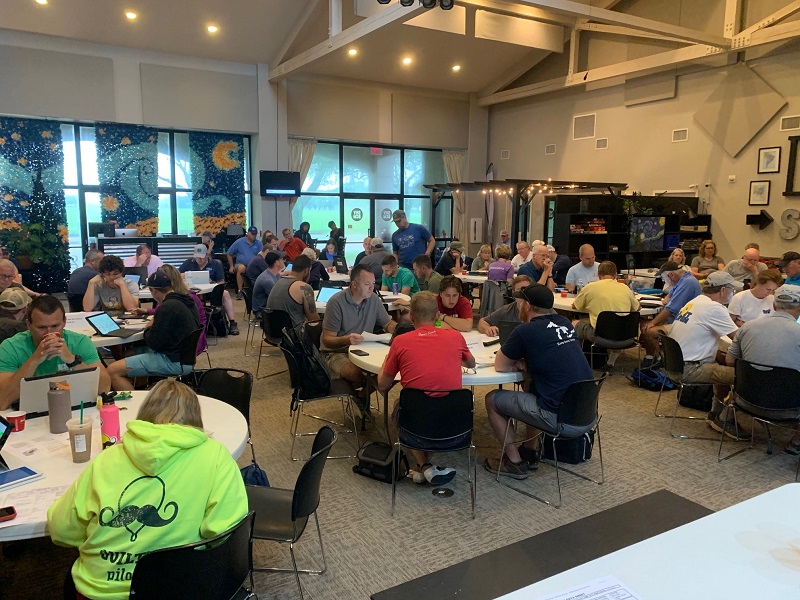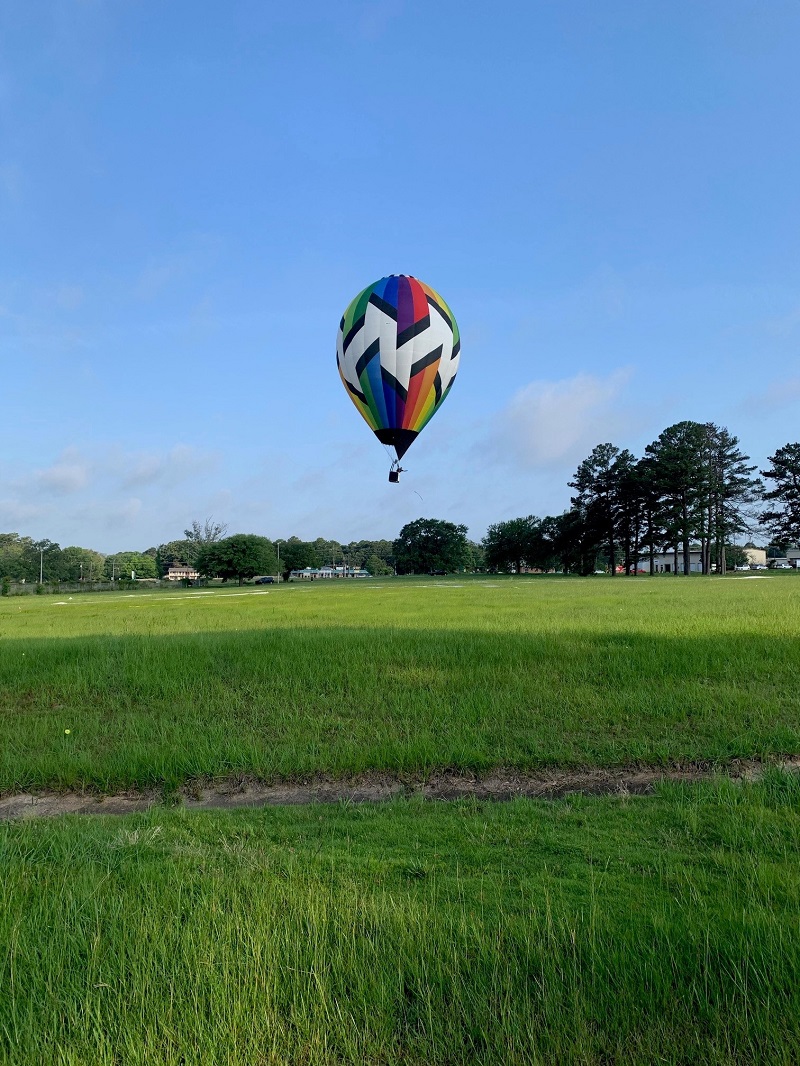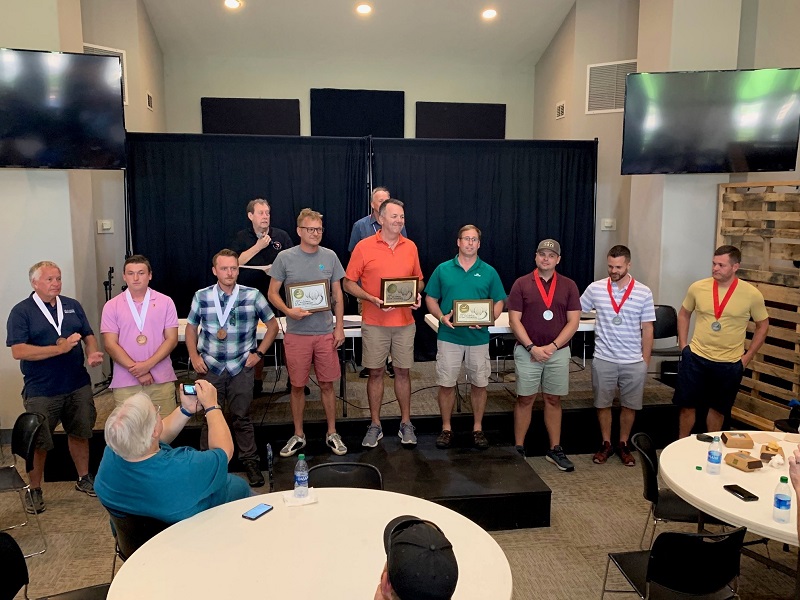2021 US Team National Championship
Here we are, arriving in Shreveport, Louisiana for the U.S. Team National Championship, and it proves to be interesting. This week-long adventure, which started on June 8th and ran through the 13th, would be a week of intense competition. The make-up of the teams would make it even more noteworthy with several National and World champions heading up many of the teams. Names like Petrehn, Heartsill, Nels, Donner, to name but a few.
Teams Competition Explanation
Teams is a very different type of event. In each Team, you will have an A pilot, a B pilot and a C pilot. It is very likely that each will have different levels of skill regarding competition flying.
The following are the only permitted team compositions based on definitions provided here:
- A, B, C
- B, B, C
- B, C, C
- A, C, C
- C, C, C
At the completion of A-rated pilot registration, individuals may potentially register without a team and officials will attempt to place them with a team should there be openings available based on their ranking. All applicants will be screened for an appropriate level of experience and other pertinent factors.
For an event of this nature, “A” ranked pilots are those meeting the following criteria:
- Any past National Champion (US, Women’s, and Juniors)
- Any World competition podium finisher
- Any pilot finishing in the top ten of the US National Championship two or more times in the last five active years.
“B” ranked pilots are those meeting the following criteria.
- Any pilot having participated in a US Nationals or World Championship two (2) or more times in the past five (5) years;
- Not classified as an “A” and
- Have finished in the top 50 of the BFA National Eligibility List (NEL) two or more times in the same five-year period.
- Any pilot finishing in the top fifteen (15) of the BFA National Eligibility System in three (3) of the last five (5) years.
Other Entrants not falling into “A” or “B” categories above will be ranked as “C” Pilots. Indeed, these are a mix of top competitors.
Some team members were going on to Longview, Texas in the following week. The Great Texas Balloon Race (GTBR) is a field of top US competitors. And returning for 2021 will be the Young Guns competition, for those pilots under 29 years old. Added for 2021, the Young Guns will also be competing to be on the podium for the US Junior National Championship.
Not every member of the team does the same thing on every task. There are numerous tasks that require the team to split up to a degree, even to fly to different targets and then to come back together to a team fly-on target. Similarly, one pilot may be the hare pilot in a Hare and Hound, or Watership Down task. It was a learning experience, and difficult weather just added to the drama.
Shreveport, Louisiana
Shreveport, Louisiana, for those that are not familiar with its location, is nestled in northwestern Louisiana, very close to the border of Texas, right on Interstate 20. Like most of Louisiana, the terrain is fairly flat with lots of water in the form of rivers and estuaries. The metroplex is made up of the downtown area, split by the Red River, with Shreveport on one side and Bossier City on the other.
Making things more interesting is the presence of not only Shreveport Regional Airport with its Class C airspace, but also includes the Shreveport Downtown Airport. Plus, just on the Bossier side of the river is the expanse of Barksdale Air Force Base, which is a SAC facility chuck full of B52 heavy lifters. Barksdale would allow flyovers if absolutely necessary. But if you land there, well, there are a couple of areas of the base that are places that are strictly off limits. Mostly the kind that could make you glow in the dark.
All in all, Shreveport is a pleasant place to fly. It is hot, like most southern states during the time of year of this event, but not too oppressive until August rolls around.
Weather outlook for the Teams Championship? Wind speeds were fairly stable from the southwest and well within the speed range for good competition. Additionally, every day carried some sort of inversion layer during the flight, producing a cloud deck at lower altitudes. Indeed, Mother Nature lived up to her old reputation of throwing a monkey wrench into the best laid plans of the competition organizers.
Practice Flights
When we arrived in Shreveport on Monday afternoon, the Monday morning practice flight had been cancelled because of low ceilings and the threat of rain. In fact, my trip from Dallas, Texas to Shreveport had provided rain showers part of the way. Instead of flying the practice flight, the time was spent in a classroom setting.
Teams were working with the task planned for the day and plotting strategies as it would be performed using a very new technology for competition, the Balloon Live App, with the new Balloon Live (BL) Sensor, which is carried aboard the balloon. This BL Sensor and App allowed much greater flexibility in declaring goals and dropping virtual markers. As it turns out, the practice session served the competitors well in familiarizing them with this new technology and various task structures.

The briefing room
In addition to providing the competitors with additional flexibility over the older logger technology, Balloon Live technology had the added benefit of downloading all the track information directly to a server. This allowed scoring officials to follow along virtually during the flight. Downloaded tracks and marker drops also helped the scorers timewise in producing results. At least, that’s the way it is supposed to work.
The second attempt at a practice flight was spoiled by low ceilings and once again pilots were grounded. The competitors and officials used the time to answer further questions and help the competitors feel more comfortable with this new equipment. Everyone got lots of rest time prior to the first day of actual competition.
Competition Begins
Day one of competition, Wednesday, came with winds still out of the south, carrying moisture from the Gulf, providing us with low cloud cover early in the morning. The first day’s flight was cancelled prior to the competitor’s arrival at the briefing area. It began to look like this entire week might see us fighting the morning low cloud cover.
Day two looked at first like it would mirror the weather conditions of day one. However, the skies cleared just after sunrise and gave the initial promise of good flying conditions. There was some windspeed at altitude. The surface winds were fairly stable. Maury Sullivan, Championship Director, released the pilots from the supplemental briefing site for competition.
By launch time the inversion layer did form, but it stayed scattered in most areas and balloons got into the air. Maury had called a 5-part task, which included:
- a FIN (Fly-In),
- TXDD (Team Max. Distance Double Drop) to a Tic Tac Toe arrangement, (photo 3 – Tic Tac Toe)
- a TFON (Team Fly-on) in which one team member declared for the rest of the team,
- a HWZ (Hesitation Waltz) where pilot A could only throw his marker from outside a cylinder measuring 75 meters in radius and from an altitude of no less than 500 feet MSL. This amounted to about 200 feet AGL. In effect for the A pilot was a red PZ cylinder over the HWZ goal. B and C pilots could fly inside that area to drop their marker and were unlimited in their scoring area.
- The last task was a THNH (Team Hare and Hound) where Pilot A could declare the Hare target before launch or enroute using the BL App for pilots B and C.

Tic tac toe
The lower scattered layer began to turn to broken so pilots were held to a slightly lower altitude, but still managed to find the turn aloft to get them to the targets. Despite the lowering ceilings, many still made it to the Tic Tac Toe layout to set the pace for the others to follow. The balloons were moving fairly fast at altitude, so for those of us on the ground, it was hard to move from target to target to observe the marker drops, but all pilots did a fair job of getting to all of their goals.
Days three and four proved to be just as much of a challenge by again providing early low clouds with little hope of an acceptable safety net for good competition. The only turn available was right at cloud level and that at a mere 1000 feet AGL. Both days provided early breakfast opportunities but no chance to mix it up in the scoring.
To keep it interesting, after the initial briefing, the competitors were sent to a location close to the first target for supplemental briefings. However, on both occasions, the tasks were cancelled from there.
On Saturday morning the weather did give some initial hope of staying scattered through the flight period, so the pilots were released to launch areas of their choice with a launch time. However, by launch time the low clouds once again formed, so the flight was cancelled through the Remind app. Another day for early breakfast.

Tether crew
The organizers also wished to feature the balloons in a more public setting so for Friday and Saturday nights, all balloons were asked to participate in a glow. Dinner would also be available for all pilots and their crews. Winds were light for both nights. Two very successful balloon glow events took place.
After the first five tasks, flown on day two of the planned competition schedule, it became evident that the scoring officials were having issues with reading the tracks from the competitors BLA sending units. Tracks were skewed off and inconsistent, but the electronic marks activated by the pilot seemed to be accurate. Thus scoring, while it took substantially longer to provide, was accurate as to marked locations of drops. Kudos to Chief Scoring Officer, Mike Gilligan, for once again coming to the rescue and to Lynn Sullivan, Asst Chief Scoring Officer, both of whom worked very long hard hours to make this right.
Things were a little tense around the war room early on the last available day for competition. Event Director, Maury Sullivan, was faced with the possibility of not having a valid championship (required to have at least two flights and three tasks). Everyone was out doing the “dance”. No, not the rain dance, just the opposite. Pilots were using every tool at their disposal to Voodoo in some good weather for Sunday morning’s flight.
It must have worked because the winds shifted around to the northwest and the moisture dried up providing a beautiful morning to fly. Competitors were released to fly a six-part task…. yes, I did say six parts….for the last day of competition.
This was quite a lineup of tasks which included:
- the inevitable FIN
- With a Gordon Bennet Memorial (GBM)
- followed by a JDG for all pilots.
- Then splitting the field to take the A pilots to a JDG,
- and the B & C pilots to a GBM.
- The last task was for A pilot only and was a JDG that involved a water hazard.

Close drop
In all, the morning went fast as the winds aloft were brisk. But the winds on the surface were predictably slow.
All tasks on the last day were limited scoring with no BL App scores allowed. This simplified things somewhat for the scoring team.
So, two flights and eleven tasks later we had a valid championship. This one was quite a challenge, not only in the variety of tasks call by Event Director, Maury Sullivan, but in the use of a new and more technical means of scoring and declaring goals.
With weather nipping at our heals throughout the event, there was a lot of pressure to provide the most competitive conditions possible, which would give the teams the best opportunity to improve their standings.
In the end, despite the superhuman efforts of Mike Gilligan and Lynn Sullivan to sort out a number of scoring anomalies with just an hour between flight completion and the beginning of the Awards ceremony, the awards were delayed. Trophies were presented to the top three finishing teams, with the fourth place finishing team announced. The other places were announced within the next 24 hours, and places 4 through 10 were publicized and prizes were then awarded by mail.

Top three teams
Congratulations
Congratulations to the top three finishing teams. In 3rd place, Team 6 made up of team leader Joe Zvada and teammates Cameron Wall and Allan Anderson. In 2nd place, Team 5 with team leader Nick Donner and teammates Cory Bloom and Branden Bloom. And winning it all, in 1st place, Team 2, with team leader Johnny Petrehn and teammates Shawn Reya and Jeff Gilles.
Congratulations to the top three teams and a very well done to the remaining 7 teams. It was a tough week, but everyone performed very well with some exciting flying and approaches to the targets. And congratulations to the officials and the Shreveport volunteers on their ‘Team Work’ to make this a successful event.
Article by Patrick and Carol Cannon

